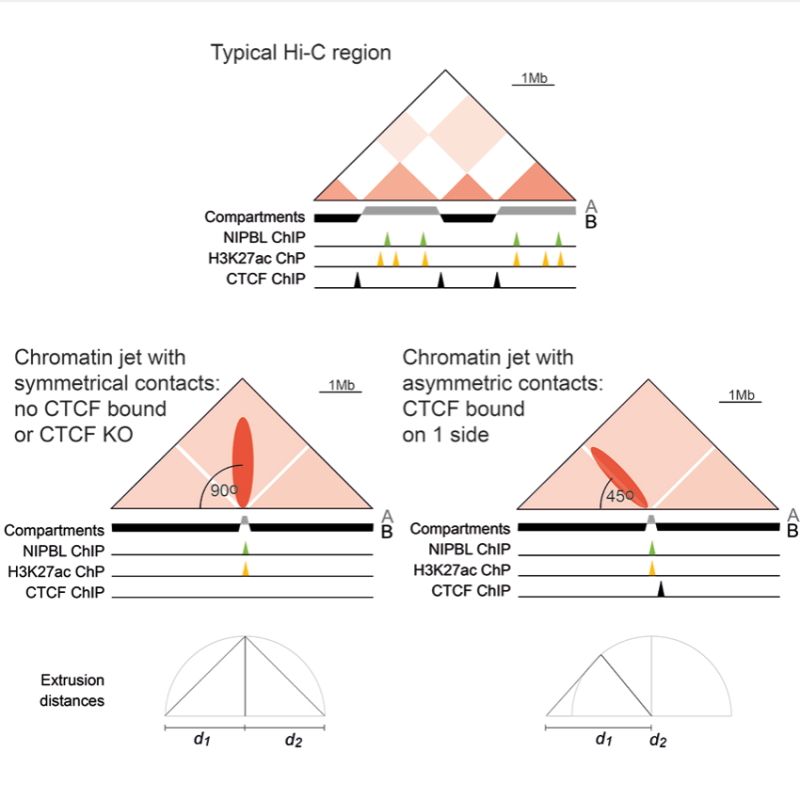By Lindsay Keith
October 26, 2022
Time to read: 2 minutes
An interdisciplinary collaboration between researchers from the MRC London Institute of Medical Sciences (LMS) and Imperial College London Maths and Computing Departments have identified and characterised chromatin ‘jets’. These discoveries provide new insights into the physiological behaviour of in vivo cohesin-mediated loop extrusion and further our understanding of the principles that underlie genome organisation.
In interphase, the genome is organised by the separation of chromatin into active (A) and inactive (B) compartments, as well as by the active formation of contact domains (TADs) and loops. Domains and loops are formed by cohesin, which mediates loop extrusion, and by CTCF, a DNA binding protein that sets the boundaries of loop extrusion. Together, cohesin and CTCF determine the organisation of the genome inside the nucleus.
This new paper describes the discovery and characterisation of chromatin ‘jets’. Jets are an unusual form of cohesin-mediated chromatin contacts, and reveal properties of cohesin-mediated loop extrusion in mammalian cells.
Experimental observations and polymer simulations have indicated that narrow origins of loop extrusion favour jet formation. If these jets are not impeded by CTCF, they can extend symmetrically for 1-2 Mb, providing an estimate for the range of in vivo loop extrusion. Asymmetric CTCF binding deflects the angle of jet propagation as experimental evidence that cohesin-mediated loop extrusion can switch from bi- to unidirectional and is controlled independently in both directions.
These data offer new insights into the physiological behavior of in vivo cohesin-mediated loop extrusion and further our understanding of the principles that underlie genome organisation

This research was published in Molecular Cell led by Matthias Merkenschlager and was conducted by researchers at the LMS in collaboration with Shanghai Jio Tong University, WLA Laboratories, Imperial College London, University of Cambridge, Technical University of Munich, Sars International Centre for Marine Molecular Biology and the Erasmus University Medical Center.
This news article was written in collaboration with GECo